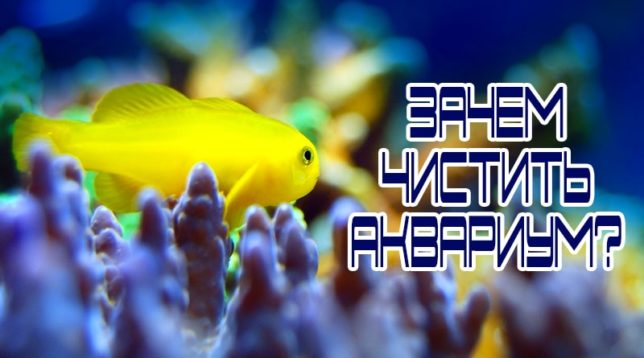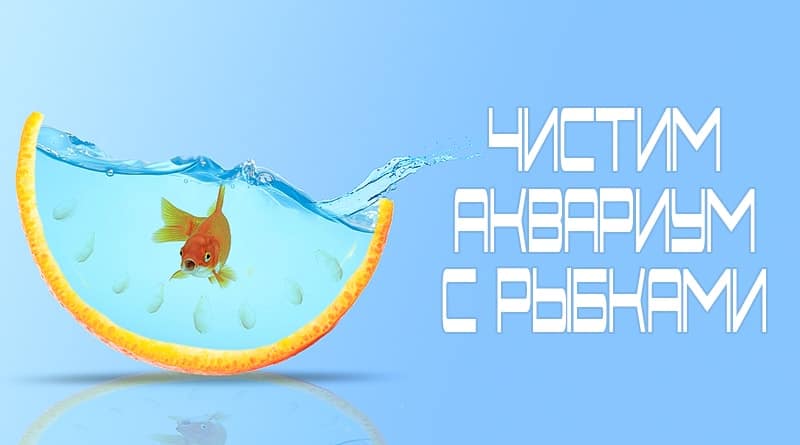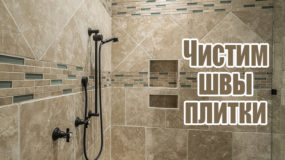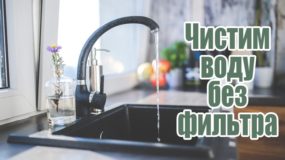Aquarium is a small world in the water. Watching fish is a fascinating affair, but there comes a moment when every owner of a personal underwater kingdom begins to ask questions about cleaning the fish tank at home.
During the cleaning process, the fish tank should be spared from unnecessary objects and plaque that forms on the walls. Consider the main causes of algae growth.
- Overpopulation by inhabitants. One individual should account for about two liters of water.
- Excess feed. All food that has not been eaten by the fish settles at the bottom and begins to decompose over time.
- Water stagnates.
- Shine. Because of the bright lighting, water blooms. Such an environment is favorable for algae.
After finding out the reasons, you can begin to cleanse.
How often to clean the aquarium and why

At home, it is impossible to create a favorable environment for fish, which would eliminate the cleaning process. Some snails will help to cope, but sooner or later, human intervention will be needed. You need to know how often to clean the aquarium.
The frequency depends on the volume. If the capacity is 50 liters or more, you will have to clean more often. Initially, the cause of pollution is the lack of a proper microclimate for fish. This indicates errors during startup. For this, there is a drug that promotes the formation of bacteria. For small sizes, you can clean as it gets dirty. For example, if the volume is up to 20 liters, you can clean it once every 2 weeks.
During cleaning, you need to bleach the decorations, rinse the plants, remove plaque from the walls. Partial water changes occur once every few weeks. If the aquarium is cleaned frequently, you can reduce the amount of fish food. There are times when the filter cannot cope with the job. This may be due to the large number of fish. In such cases, it is better to replace it.
You must always consider the number of fish. The more of them, the more often you need to clean the aquarium. Due to oversaturation, there is a risk of death of the inhabitants. There are species of fish that painfully endure frequent water changes.
When the aquarium holds more than 10 liters of water and is equipped with the necessary equipment, you can clean it once a month. The whole cleaning process is to remove plaque. When replacing water, they remove the pollution from the bottom, but the filter can handle this.
Frequent water changes affect the microclimate, and fish and plants experience stress. There are cases when a fleecy of brown color appears on the walls of the aquariums. It is useless to remove it. It is necessary to deal with the cause of its appearance.
Routine cleaning should take place several times a week. If a mud stain rises from the bottom during fish movement, this is a signal to start cleaning, even if the inhabitants feel good.
Preparing the aquarium for cleaning
Before starting work, you need to prepare the tool and material. You will need:
- Large capacity.
- Scraper.
- Siphon, complete with hose.
Prepare clean water. Remove stagnant water from the aquarium, up to 30% of the total. When keeping sea fish, the water should be composed of sea salt. Fresh water should be free of impurities and chlorine.
Infusion of water passes within two days. Two hours before cleaning and two hours later, do not feed the fish.
Used containers must be new. Hands should be washed before the procedure. Before starting work, you must turn off electrical appliances and the filter.
How to drain the water
You will need a deep container, jig, net, hose with clamp. Procedure.
- Aquarium water is collected in the depositor. You can use a container or other aquarium.
- All plants are removed. If the water drains due to an algae disease, they will have to be thrown out and new ones used.
- A deep tank is placed next to the aquarium, one level lower.
- The hose must be flexible and several times longer than the height of the aquarium.
- The hose is filled with water, and the edges are clamped.
- One end is placed at the very bottom, next to the ground. This will remove not only water, but also all contaminants. The second end of the hose is lowered into the container.
- After the clamps are removed.
- If the capacity is less than the volume of the aquarium, then periodically have to pour water.
Where to put the fish
When the water is completely replaced, the fish are caught with a net and are deposited in a deep container or in another aquarium. Use water from the aquarium. When the water is completely replaced, you can plant the aquarium with plants. It is not recommended to start the fish for about a week. During this period, a microclimate will form. After a couple of days, the water becomes cloudy. This indicates the activity of bacteria, and in a few days it will begin to lighten. It's time to return the fish.
Step-by-step cleaning plan

Aquarium - home and office decoration. Keeping it clean is easy. The main thing is to know some nuances.
Walls and glass
Cleaning starts with cleaning the walls. It is entertainment that depends on them. Bacteria and algae appear on the glasses. This gives a sloppy look.
The outside of the aquarium can be washed with a damp sponge or cloth. Special detergents will not harm the inhabitants. Snails and fish handle some types of contamination, but traces remain on the glass. Some of the plaque can be eaten by fish, and the rest is removed by draining the water.
Priming
Flushing the soil will lead to a violation of the microclimate and poor health of the fish.
With a good filter, part of the waste is removed, another remains and settles at the bottom. Rotting disrupts the growth of algae, in order to prevent this, you need to clean the soil. For this, a special siphon is used, which is designed to clean the soil. Devices may differ in characteristics and functionality, but the principle of operation remains unchanged.
Contamination from the soil is washed away by pressure. The result is clean soil and water. It is advisable to use it at the time of partial replacement of water.
Algae and decorations

Dark colored film forms on the scenery and algae. To remove, use a washcloth or brush with a hard pile. The cleaning work can be carried out inside the aquarium or removed. Cleaning agents are not recommended. Before returning the scenery and algae, they must dry.
Filter
The sponge inside the filter needs to be cleaned regularly to avoid clogging and reduce water flow. But it is worth considering that an old sponge with traces of contamination is more effective than a new one. This is due to the fact that beneficial bacteria live on the surface of the sponge. With severe pollution, the flow of water is difficult, due to a decrease in oxygen, these bacteria die.
Thus, a sponge from a filter of low power, you need to wash once every few weeks.If the filter contains activated carbon, it must be changed monthly. Filters with primary cleaning are replaced every few weeks, and biological filters are washed once a month.
Water change
Replacing all the water can be harmful, as when washing the soil. In order not to disturb the microclimate, about 30% of the water should be replaced weekly.
How to remove pollution without draining water
You can take care of the health of the inhabitants of the aquarium by cleaning 1 time per week.
- Prepare the volume of water that will be replaced.
- To clean glass and algae, you will need a scraper.
- Deep capacity.
- Hand pump.
- Replaceable filter accessories.
- Special cleaning products for walls.
- Blade.
Step-by-step steps to remove contamination:
- The walls. Glass can be cleaned with a scraper. For difficult contamination, a blade is suitable. It will require the use of clean rubber gloves. The scraper is used only for work in an aquarium.
- Cooking water. It is necessary to determine how much water will change. With regular maintenance of the aquarium, 15% of the volume can be replaced. If there are sick fish, then upgrade to 50%.
- Pumping water. A pump is placed in the aquarium, and water is pumped into the tank.
- Peeling gravel. In such cases, a special pump is used. Using it, you can remove food residues and contaminants. If fry are present in the aquarium, then tissue must be fixed to the end of the pump. In the presence of sand it is not recommended to use the pump in the form of a shovel. To remove impurities, you can use a hose from the pump, this will prevent contact with the sand.
- Scenery. Do not forget that the scenery is kept clean. Algae begins to grow rapidly with excess nutrients. You can remove them with a scraper in pumped water. If cleaning is difficult, a bleach solution can be used. After that, the decorations are washed with boiling water, dried and returned.
- Adding water. Water replacement must take place in compliance with the temperature regime - this is an important factor in the health of the inhabitants of the aquarium. For fish, warm water may seem too hot. When using tap water, you need to soften it. With an increased level of nitrates, half the volume can be replaced with distilled water.
After replacing the water, you can start processing the outer surface of the aquarium using a damp cloth or sponge, without chemical detergents.
How to properly care for the aquarium
When the aquarium is equipped and fish are launched into it, you need to regularly look after it. This will keep the inhabitants attractive and healthy. It will take you a couple of minutes every day and a couple of hours a week to take care.
Feeding and Inspecting Equipment
Inspection of the inhabitants. At the time of feeding, you need to inspect the fish for diseases. If you suspect, find out the reason and take action.
- Water change. Once a week or two, change part of stagnant water.
- Glass care. Remove algae from the walls of the aquarium.
- Filter. The filter needs care. Clean the sponge and change the elements that filter the water.
- Plants. They require attention. Dead skin should be removed, some should be cut.
- Cooling. In the warmer months, the aquarium needs to be cooled. Install away from direct sunlight.
Useful Tips

- It is not recommended to overfeed fish. You need to give as much food as the inhabitants can eat in a few minutes. Residues of feed settle to the bottom and decompose, and fish can get sick from overeating.
- Water should not abound in fish and algae. Biological balance will be disturbed.
- Do not choose a deep aquarium, this will make it difficult to clean. The best option is when the hand reaches the bottom.
- For beginner aquarists, it is not recommended to purchase expensive species of inhabitants. Due to lack of experience, fish can die. It is better to gain experience on unpretentious species.
- Inhabitants can jump out, so the aquarium must be closed.
- After the death of the fish, do not immediately launch a new individual. Observe the quarantine period.
- If you need to change the temperature of the water, do not do it abruptly.
- Remove feed residues in a timely manner. This will avoid contamination.
- When the inhabitants fall ill, it is better to disinfect the aquarium.
- When replacing the water completely, do not drop the fish into a metal container.
- Fish should be protected from noise. They may be uncomfortable, as a result, immunity will decrease and they will be sick more often.
Self-cleaning an aquarium at home will not create problems and does not take much time. Following the care tips, caring for the fish correctly, you will enjoy and enjoy the beauty of the inhabitants of the aquatic world.










